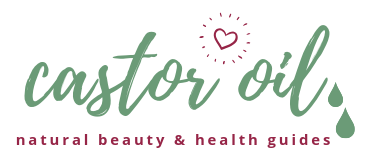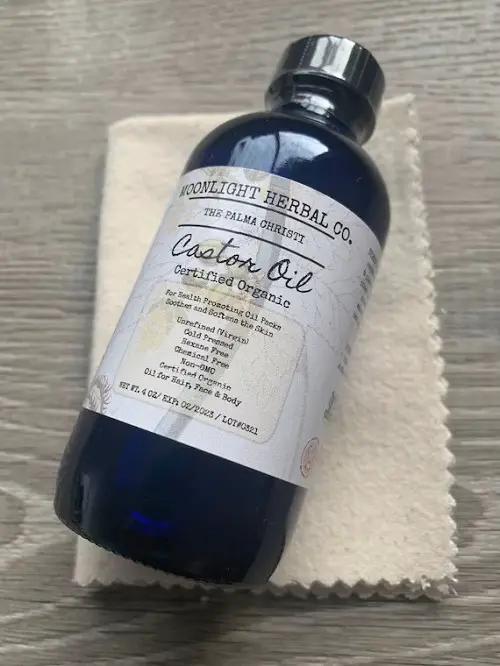Learning how to apply castor oil for yeast infections can help you combat this skin condition without resorting to OTC medications!
Yeast infections are uncomfortable conditions that affect 8 out of 10 people. While various treatments are available, natural remedies are fantastic options—especially learning how to use castor oil for yeast infections can make a difference.
What are Yeast Infections?

Also known as candidiasis, yeast infections are caused by an overgrowth of the fungus Candida, which naturally lives in our bodies. While Candida is typically harmless, when it grows too much, it can cause infections. These infections are common and can happen in various body parts, though they’re most often linked to the genital area.
Common symptoms include itching, burning, redness, and unusual discharge. Several factors can trigger a yeast infection, such as hormonal changes, taking antibiotics, a weakened immune system, or even a diet high in sugar. Knowing what yeast infections are and what symptoms to look for can help you recognize the issue early and seek the proper treatment.
How to Apply Castor Oil for Yeast Infections?
- Ensure you’re using high-quality, pure castor oil, preferably cold-pressed, to maximize its effectiveness. This type of castor oil retains more of its natural therapeutic properties.
- Since castor oil is quite thick and potent, it’s a good idea to dilute it with a carrier oil like coconut oil, which also has antifungal properties. Mix equal parts of castor oil and coconut oil before applying.
- Before applying castor oil, gently clean the affected area with mild soap and water. Pat the area dry with a clean towel, as yeast thrives in moist environments.
- Using clean hands or a sterile cotton ball, apply the diluted castor oil directly to the affected area. Be gentle, especially if the area is already irritated or inflamed.
- Let the oil sit on the skin for at least 30 minutes to an hour to allow it to work effectively. You can also apply it before bedtime and leave it on overnight for maximum benefit.
- After the treatment time, you can rinse the area with warm water if you prefer, though leaving it on is often safe as well.
For the best results, repeat this process once or twice a day until the symptoms improve. Consistency is key to reducing the infection. If you notice any increased irritation or discomfort after using castor oil, stop the treatment and consult a healthcare professional.
Benefits of Using Castor Oil for Yeast Infections
1. Natural Antimicrobial Action
Castor oil contains a compound called ricinoleic acid, which naturally fights off harmful microorganisms, including the yeast responsible for infections like Candida.
By helping to curb the growth of yeast, castor oil can tackle the underlying cause of the infection, making it a useful option for managing and potentially resolving the issue.
2. Reduction in Itching and Discomfort
Yeast infections often come with uncomfortable symptoms like itching and burning. Castor oil’s anti-inflammatory properties can help ease these symptoms when applied to the affected area. It works to calm irritated skin, making the experience of dealing with a yeast infection more bearable.
3. Minimal Side Effects
When used on the skin, castor oil is generally safe and well-tolerated, with fewer side effects than some pharmaceutical treatments.
This makes it a good choice if you prefer natural remedies that are gentle and less likely to cause unwanted reactions, especially when diluted properly.
4. Convenient and Accessible
You can easily find castor oil at most drugstores or order it online, making it a convenient option for those looking for a natural remedy for yeast infections. Its widespread availability means you can start treatment without needing a prescription or a trip to the doctor’s office.
5. Potential for Recurrent Infections
If you often deal with yeast infections, castor oil might offer a natural way to manage them. By addressing both the symptoms and the yeast overgrowth that causes the infection, it may help reduce the frequency of outbreaks, leading to a better overall quality of life.
6. Holistic Approach
Unlike treatments that only focus on relieving symptoms, castor oil offers a more comprehensive solution. It works to address both the yeast overgrowth causing the infection and the uncomfortable symptoms that come with it, potentially providing longer-lasting relief and preventing future infections.
Precautions
- Consult with a healthcare provider before using castor oil for yeast infections, especially if you are pregnant, breastfeeding, or have underlying medical conditions.
- If you experience adverse reactions or if symptoms worsen, seek medical attention promptly.


